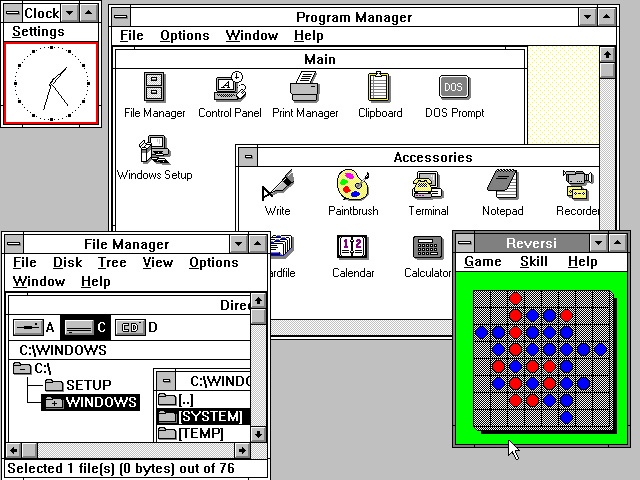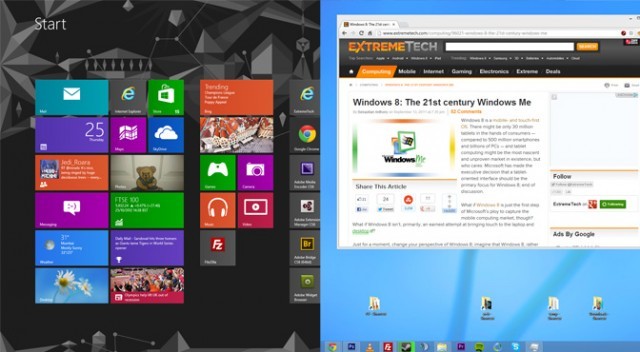With the complete hardware, services, and pricing unveiled for the Xbox One at E3, we now have the totality of Microsoft’s “next-generation” consumer-oriented lineup: Windows 8 on the desktop, laptop, and tablet, Windows Phone 8 on the smartphone, and Xbox One in the living room.
On paper, this trifecta, seamlessly connected via Microsoft Account, SkyDrive, and Xbox Live, is almost perfect. In reality, though, this couldn’t be further from the truth. Where did it all go wrong for Microsoft?
From an objective standpoint, all of Microsoft’s new-for-2013 offerings — Windows 8, Windows Phone 8, and the Xbox One — are perfect. Windows 8 capitalizes on the slow death of the desktop and the rush towards mobile; Xbox One is a powerful and feature-rich games console that could dominate the living room; and Windows Phone 8 is a sharp and savvy smartphone OS that ties everything together, while on the move or as a second screen. As a tech writer and a self-confessed life-long Microsoft fan, I have never been more excited about Microsoft’s future than over the last two years of covering Windows 8, Windows Phone 8, and the “Xbox 720”.
From a subjective standpoint, though, each of Microsoft’s new offerings is intrinsically flawed and bogged down by crippling policy decisions no doubt handed down from Microsoft’s besuited higher echelons. Windows 8 and 8.1, despite “responding to customer feedback,” still forces users to use the Metro interface, even when a touchscreen isn’t present. Windows Phone 8 is one of Microsoft’s most polished products, but a smartphone OS is only as strong as its app ecosystem, and due to its minuscule market share WP8 still lacks the ecosystem to pull consumers away from iOS and Android — an unfortunate Catch-22 if I ever saw one. The Xbox One, depending on your point of view, is either an awesome all-in-one living room box that plays games, or an awful DRM-restricted games machine that acts as an HDMI passthrough for your cable box — the very same thing that the tried-and-failed Google TV attempted to do.
How did Microsoft manage to take three exciting, technologically advanced products and turn them into mediocre, humdrum devices that have had all of the fun and adventure sucked out of them?
 Windows 3.0
Windows 3.0
A history lesson
For the past 20 years, Microsoft hasn’t done much more than double, triple, and quadruple down on the desktop ecosystem. Since the launch and success of Windows 3, almost all of Microsoft’s decisions have revolved around the maximizing of Windows-derived profits. The success of Office, one of Microsoft’s most profitable divisions, is entirely underpinned by Windows’ 95%+ desktop penetration — ditto the Server division. It’s even possible to draw a link from Windows’s dominance in the desktop market, to DirectX and PC gaming, to the Xbox.
To be honest, at the time, this all made perfect sense. Windows, Office, and Server were, and are, monumentally large profit drivers. But if technology has taught us anything it’s that nothing lasts forever — especially business models predicated on a large, bulky form factor that is virtually guaranteed to go the way of the dodo as technology advances. If anything, Microsoft has done incredibly well to maintain the desktop-dominated status quo for as long as it has.
Now, though, with tablets and smartphones exploding much faster than anyone could’ve anticipated, Microsoft is forced to adapt. Windows 8 and Windows Phone 8 are so different from their predecessors. The Xbox One isn’t that different, but it’s about as far from the Xbox 360 as Microsoft could get without completely redefining the games console paradigm. On paper, these massive changes all make sense, and if they were executed properly they really could give Microsoft the beachhead in the mobile market that it so desperately needs.

Gutless equivocation
Unfortunately, such changes simply can’t be easily made by a large multinational bureaucracy that generally works with three-year product cycles, rather than 12 months. From a strictly fiscal and pleasing-the-stock-holders point of view, too, Microsoft can’t just kill off the desktop. As it stands, Microsoft is massively profitable and will be for years to come. But at the same time, Microsoft knows that it must change now or face being squeezed out of the market by iOS, Android, and other upstarts. Faced with such a dilemma, Microsoft hedged its bets and created Windows 8, a Frankensteinian operating system that is the jack of all trades but the master of none.
Where does Microsoft go from here? It’s not too late for Windows 8, especially with Windows 8.1 coming up. If Windows 8 is a success, then there might be a knock-on effect that finally gets Windows Phone 8 off the ground. Finally, if the Xbox One works, it could be the perfect centerpiece of a new, non-desktop-oriented Windows ecosystem. That’s a lot of ifs, though, and given how wobbly the Xbox One looks in comparison to the PS4, and WP8′s consistently ailing market share, I think Microsoft has a rough few years ahead.
Written by: Sebastian Anthony, ExtremeTech
Posted by: Situated Research
